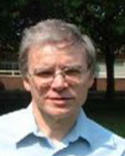- Dual Vector Spaces as a Basis for Physics (2010) [Updated 1 decade ago]
- What is Vacuum? (2008) [Updated 7 years ago]
- Breaking the Dirac Code (2006) [Updated 7 years ago]
- How to Get Something from Nothing (2005) [Updated 7 years ago]
- Dual Vector Spaces as a Basis for Physics (2010) [Updated 1 decade ago]
- What is Vacuum? (2008) [Updated 7 years ago]
Vacuum has been used in QFT without a complete understanding of what it is, why it is necessary, and how it should be described mathematically. Answering these questions gives us major leads into many significant aspects of QM and particle physics. But the structure it reveals is also a generic one, not confined to fundamental physics, and has applications to all systems governed by holistic principles.
- Breaking the Dirac Code (2006) [Updated 7 years ago]
In describing the fermionic state, the Dirac equation is the most fundamental in physics. The full power of the equation, however, seems to be obscured by a complicated mathematical apparatus which prevents us gaining a more direct knowledge of the fermionic state. To get beyond this hurdle means breaking the equation?s mathematical code. The reward for doing this is a new set of insights into particle physics and quantum mechanics.
- How to Get Something from Nothing (2005) [Updated 7 years ago]
Chapter 10 of Immediate Distant Action.
Many difficult concepts will be discussed in this chapter, but the basis of all the ideas in it is profoundly simple. It is that the totality of the conceptual scheme we use to structure mathematics and physics is required to be zero at every level. In that case, we can develop a dualistic mathematics which has a very specific relationship to what we conceive of as the physical world. Many physical notions are generated in this process, in particular the idea that we cannot fully explain physical systems without the dualistic notion of time-delayed action between the discreet objects of physical measurement occuring at the saem time as unmediated instantaneous correlation-at-a-distance (UICAAD). The analysis is used to discuss the nature of gravity and inertia, and the quantum/classical transition, and to highlight the significant role played by angular momentum in unifying the fundamental concepts of physics at the quantum level.
Sections:
- Foundations of mathematics 241
- Foundations of physics 248
- The Dirac state 251
- Relativity 255
- Gravity and inertia 257
- Angular momentum 263
- The quantum/classical transition 266
- Conclusion 268


